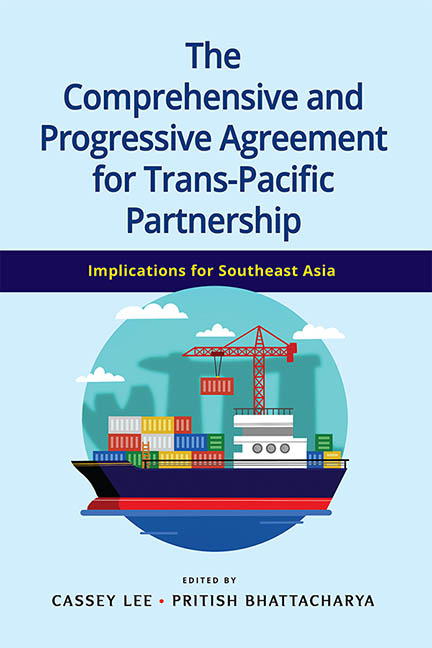Book contents
- Frontmatter
- Contents
- Preface
- Abbreviations
- About the Contributors
- 1 Introduction
- 2 The Economics of the CPTPP and RCEP: Asia Pacific Trade Agreements without the United States
- 3 The TPP and CPTPP: Truths about Power Politics
- 4 The Investment Chapter and ISDS in the CPTPP: Lessons from and for Southeast Asia
- 5 Intellectual Property in the CTPP and Access to Medicines A Thai Perspective
- 6 New Rules for State-Owned Enterprises in the CPTPP
- 7 Impact of the CPTPP on Japanese Manufacturing Affiliates in ASEAN
- 8 Reassessing Malaysia’s Export Opportunities in the TPP and CPTPP
- 9 Impact of the CPTPP on Vietnam
- 10 Should Thailand Join the CPTPP?
- 11 Indonesia, the TPP and CPTPP: Hold Your Breath
- Index
7 - Impact of the CPTPP on Japanese Manufacturing Affiliates in ASEAN
Published online by Cambridge University Press: 08 October 2021
- Frontmatter
- Contents
- Preface
- Abbreviations
- About the Contributors
- 1 Introduction
- 2 The Economics of the CPTPP and RCEP: Asia Pacific Trade Agreements without the United States
- 3 The TPP and CPTPP: Truths about Power Politics
- 4 The Investment Chapter and ISDS in the CPTPP: Lessons from and for Southeast Asia
- 5 Intellectual Property in the CTPP and Access to Medicines A Thai Perspective
- 6 New Rules for State-Owned Enterprises in the CPTPP
- 7 Impact of the CPTPP on Japanese Manufacturing Affiliates in ASEAN
- 8 Reassessing Malaysia’s Export Opportunities in the TPP and CPTPP
- 9 Impact of the CPTPP on Vietnam
- 10 Should Thailand Join the CPTPP?
- 11 Indonesia, the TPP and CPTPP: Hold Your Breath
- Index
Summary
Introduction
The Comprehensive and Progressive Agreement for Trans-Pacific Partnership (CPTPP) was signed on 8 March 2018 by eleven countries—Japan, Brunei, Malaysia, Singapore, Vietnam, Australia, Canada, Chile, Mexico, New Zealand and Peru. The agreement is bound to affect business activities of Japanese manufacturing affiliates operating not only in CPTPP member countries but also in non-member economies. While the former effect will certainly be positive, the latter could be negative. According to ASEAN Stats, Japan ranks very high in terms of value of foreign direct investment (FDI) flow into ASEAN countries; therefore, any change in the trend will have a significant impact on the grouping.
This chapter investigates how Japanese manufacturing affiliates in ASEAN are expected to change their business activities following the implementation of the CPTPP. The liberalization levels suggested in the CPTPP are very high; all member countries are expected to eliminate tariffs for almost all products. With the exception of Japan, tariff elimination rates are expected to reach 99 or 100 per cent in all countries, both in terms of the number of tariff lines as well as trade value. In the case of Japan, this figure stands at 95 per cent—the highest among all its recently-concluded regional trade agreements (RTAs). In order to further investigate the impact of the trade agreement, it is important to discuss the general effects of tariff reduction on business activities in CPTPP member countries. This chapter begins with a discussion of the effects on their exports to other CPTPP members, followed by the impact on Japanese manufacturing affiliates in ASEAN.
The rest of the chapter is organized as follows. The next section provides an overview of the distribution of Japanese manufacturing affiliates across ASEAN economies. The third section focuses on the general effects of tariff reduction on exports from ASEAN CPTPP member countries. The subsequent section examines the effects of tariff reduction on Japanese manufacturing affiliates in ASEAN, while the fifth section concludes the chapter.
Distribution of Japanese Manufacturing Affiliates in ASEAN Member Countries
Information on the distribution of Japanese manufacturing affiliates across ASEAN member countries can be obtained from the “Basic Survey of Overseas Business Activities” collected by the Ministry of Economy, Trade and Industry (METI), Japan.
- Type
- Chapter
- Information
- Publisher: ISEAS–Yusof Ishak InstitutePrint publication year: 2021

